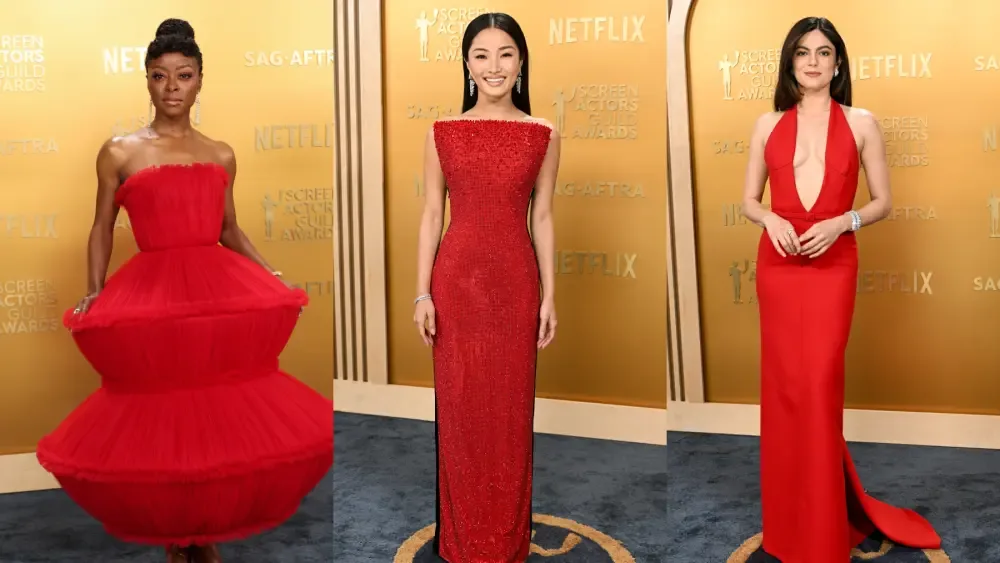In a sharp moment of cultural commentary during Apple TV’s Shrinking, Liz, a character in her 50s, runs into an old boyfriend. “Wow, Liz, look at you,” he exclaims, unironically. “You’re so thin, you look as though you could be ill.” Liz, played by the brilliant Christa Miller, beams in response. “Thank you,” she says, her face frozen in a way that makes her emotions hard to decipher. This exchange, both darkly funny and unsettling, feels eerily prescient as we observe the 2025 Screen Actors Guild (SAG) Awards red carpet. It seems we’ve reached a point where looking “ill”—the kind of “ill” that suggests dramatic weight loss rather than the “wrong” kind that involves steroid-induced bloating—has become a twisted compliment. Haven’t we been here before?

The 1990s, for all their New Age veneer (think all-white collections symbolizing spirituality), were also brutally unforgiving. It was the decade that gave us “heroin chic,” a trend so pervasive that even President Clinton felt compelled to condemn it. Yet, for many, it became an aspirational aesthetic. Fast forward to 2025, and body diversity—a movement meant to celebrate the non-conformity of all bodies—feels like a distant memory. In its place, we’re witnessing the resurgence of an old, dangerous ideal: extreme thinness.
But this isn’t just any weight loss. Thanks to the meteoric rise of weight-loss drugs like Ozempic, Wegovy, and Semaglutide—and the fashionable practice of microdosing them—the already slim are becoming ultra-skinny. The more this look is normalized, the more extreme it becomes. At the SAG Awards, several attendees appeared “Liz-ill,” their gaunt frames sparking concern. Yet, to them, the mirror reflects not illness, but desirability. When friends express worry, it’s often dismissed as envy.

It’s not acceptable to body-shame individuals, and rightly so. We don’t know the personal circumstances behind these dramatic transformations. But the images are undeniable—and deeply unsettling.
Who’s to blame? The food industry, for one, has spent decades flooding the market with gut-disrupting junk. The wellness movement, for another, bombards us with esoteric, often contradictory advice. Is it any wonder that even privileged A-listers no longer know how to eat “instinctively”?
The fashion industry is far from innocent. Designers, after all, decide which models walk their runways. Many—though not all—still favor the “Liz-ill” look. I once told a famous designer that I couldn’t use images from his shows because the models looked emaciated. He couldn’t comprehend my concern.
In the 2000s, Alexandra Shulman, then editor of British Vogue, wrote an open letter to designers criticizing the minuscule sample sizes they sent for magazine shoots. Even Hollywood’s slimmest actresses struggled to fit into them. The result? Actresses tightened their diets even further.
At the 2025 SAG Awards, the issue isn’t actresses squeezing into size zeros—they’re already there. The clothes are custom-made, and tailored to their ultra-slim frames. Hollywood, too, is complicit. Consider this year’s most talked-about films:
- The Substance, starring Demi Moore, features endless shots of the 62-year-old actress lying naked on a morgue-like bathroom floor alongside a physically flawless 30-year-old Margaret Qualley. Marketed as a satire on Hollywood’s obsession with ageing, it instead portrays ageing as a horrific catastrophe.
- Anora, despite being hailed as a masterpiece, feels voyeuristic, with its lens fixated on the naked, petite body of its young star, Mikey Madison.
- Babygirl, starring Nicole Kidman, explores a powerful woman’s sexual submissiveness but ultimately feels prurient. The main takeaway? Kidman, at 57, still has a “perfect” body.
These films, for all their artistic pretensions, inadvertently highlight our society’s war on human frailty. We love our bodies, yet we hate them. We want to live long lives, yet we’re terrified of ageing. We know that being too fat or too thin is unhealthy, yet finding the middle ground feels impossible.

Why is balance so hard to achieve? Perhaps because we’re trapped in a culture that glorifies extremes. Thinness is back, not just as a trend, but as a symptom of our collective anxiety—a reflection of our paradoxical relationship with our bodies and ourselves. Until we confront this, the cycle will continue, and the mirror will keep lying to us.
